Designer vs. Players
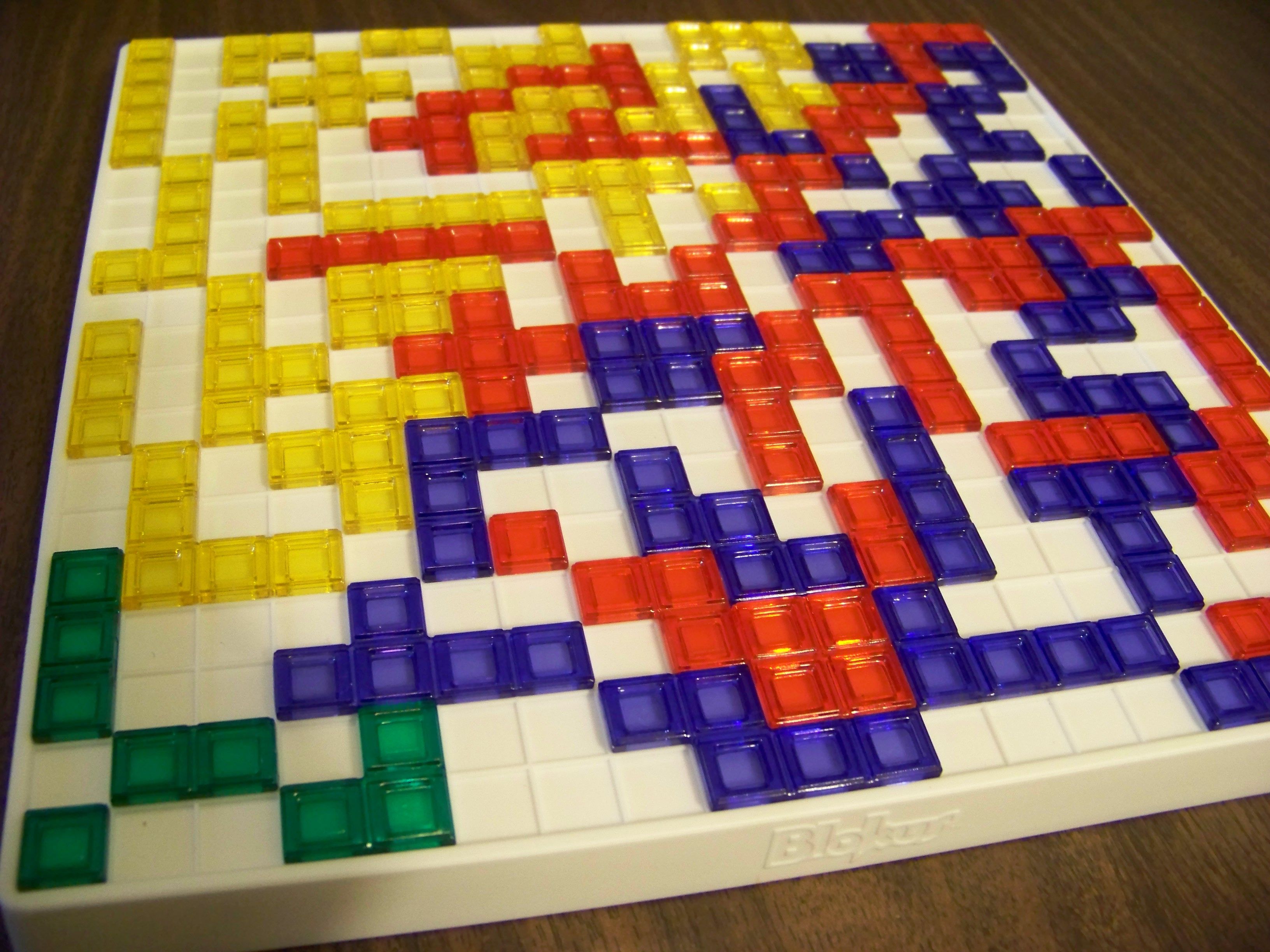
Discussing a fundamental dilemma for board game designers: what can we expect from players?
7/8/2017
The game where you become a peasant, suffer from taxation, and celebrate economic inequality!
Posted on 7/15/2017 by Tim Rice
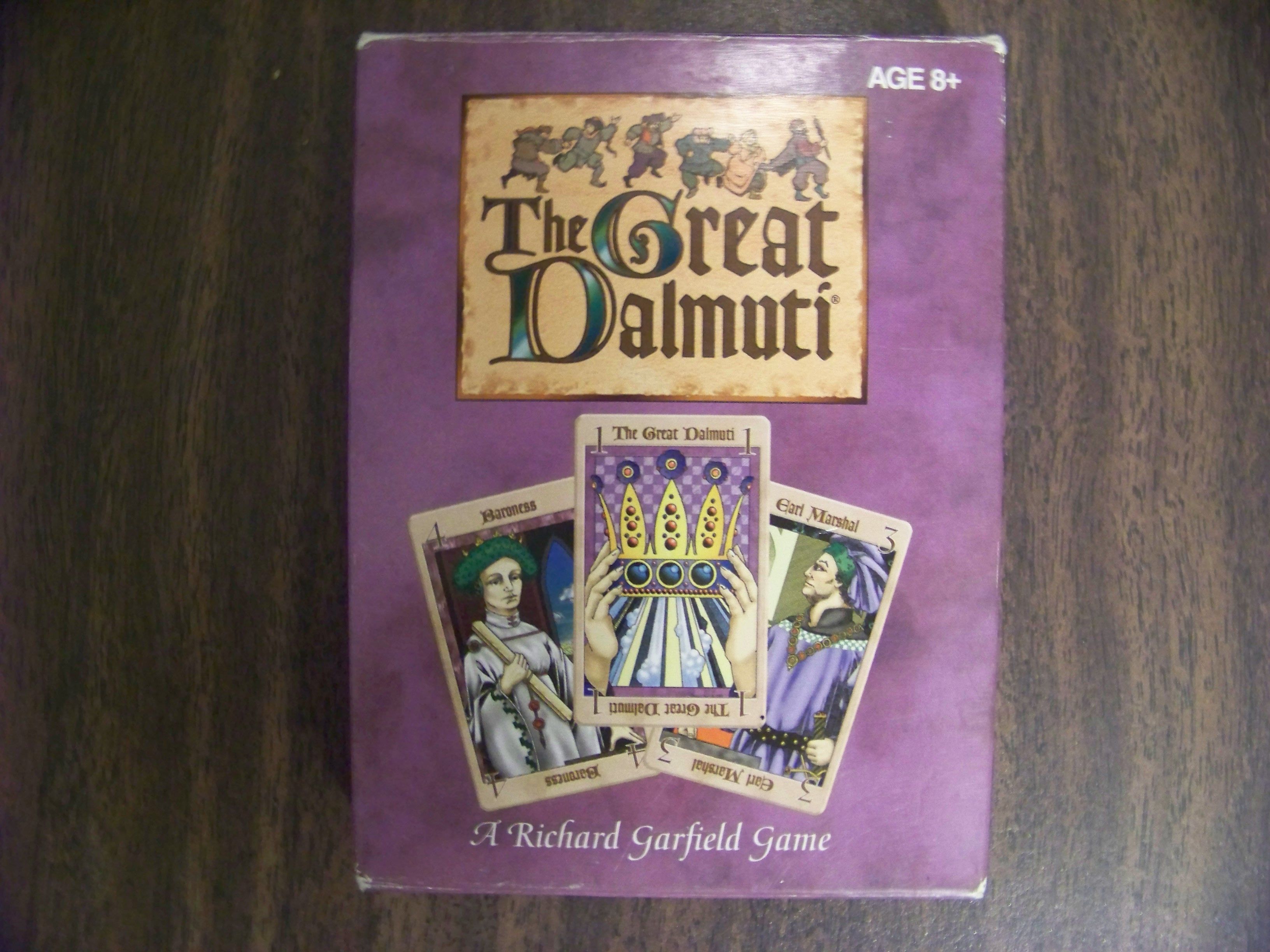
Ah, the good old social hierarchy. Where the poor have nothing and the rich have everything (and do everything they can to make sure it stays that way). In real life, working your way up the pyramid is very difficult, but in The Great Dalmuti, it’s as simple as winning a hand.
The Great Dalmuti is a light-hearted card game that is all about clawing your way to the top of the social ladder (at the expense of everyone else, of course). It is a simple climbing game with a few interesting twists that, as long as you don’t take it too seriously, can make for an amusing and memorable experience.
The game’s 80-card deck includes twelve 12s, eleven 11s, ten 10s, nine 9s, eight 8s, seven 7s, six 6s, five 5s, four 4s, three 3s, two 2s, one 1, and two jesters which are usually used as wild cards.
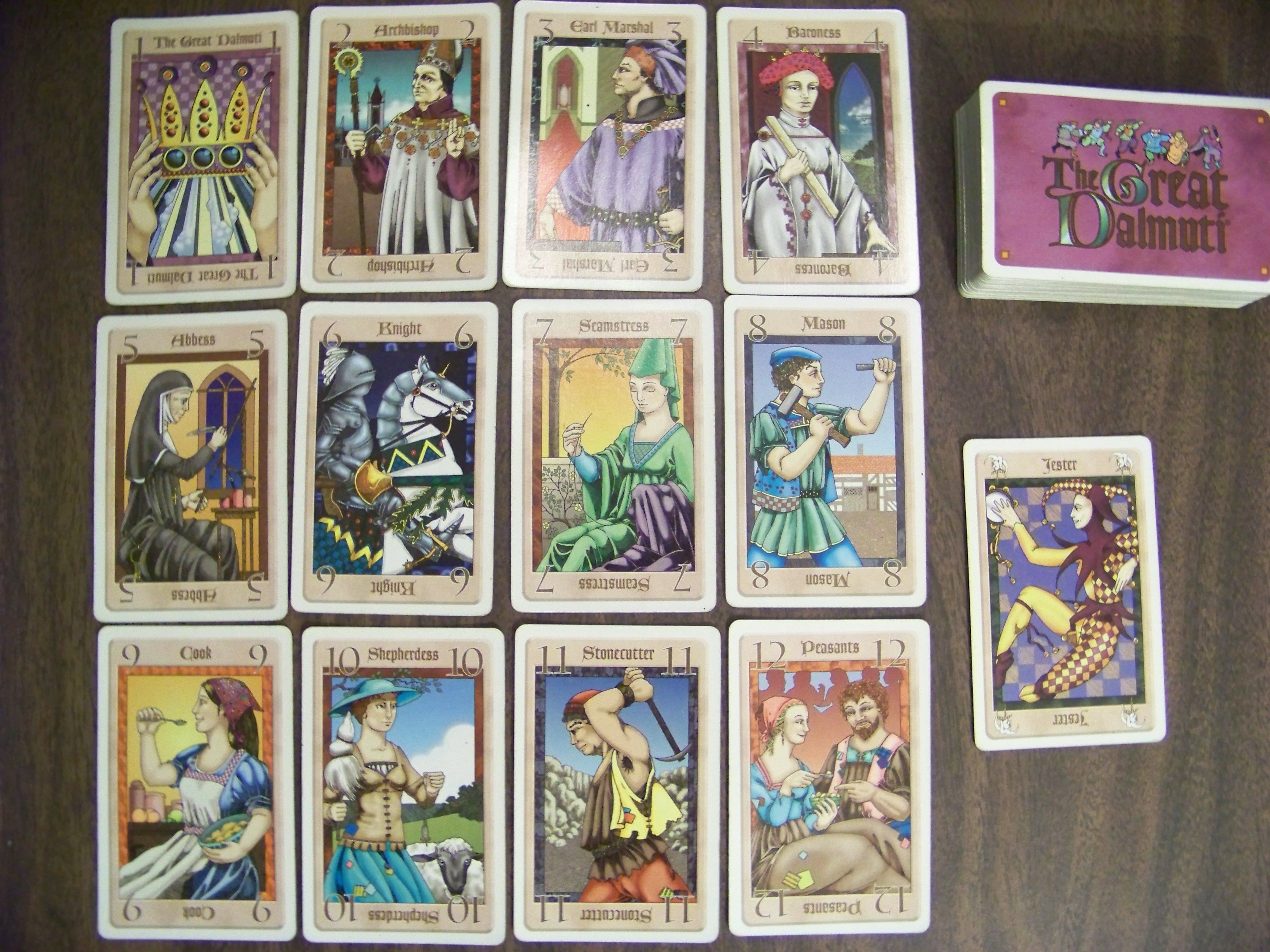
To begin, there is a hierarchy that must be established, and it is represented by the players’ seats at the table. Each player draws a random card from the deck. The player with the lowest card becomes the Greater Dalmuti for the first round. The player with the next lowest card sits to the left of the Greater Dalmuti and becomes the Lesser Dalmuti.
This continues until every player has a seat. The player to the right of the Greater Dalmuti (the one who drew the highest card) becomes the Greater Peon for the first round, and the player to the Greater Peon’s right becomes the Lesser Peon. Any players in between the Lesser Dalmuti and the Lesser Peon become Merchants. These titles are important because the Dalmutis will enjoy special benefits for their status while the Peons must suffer certain punishments.
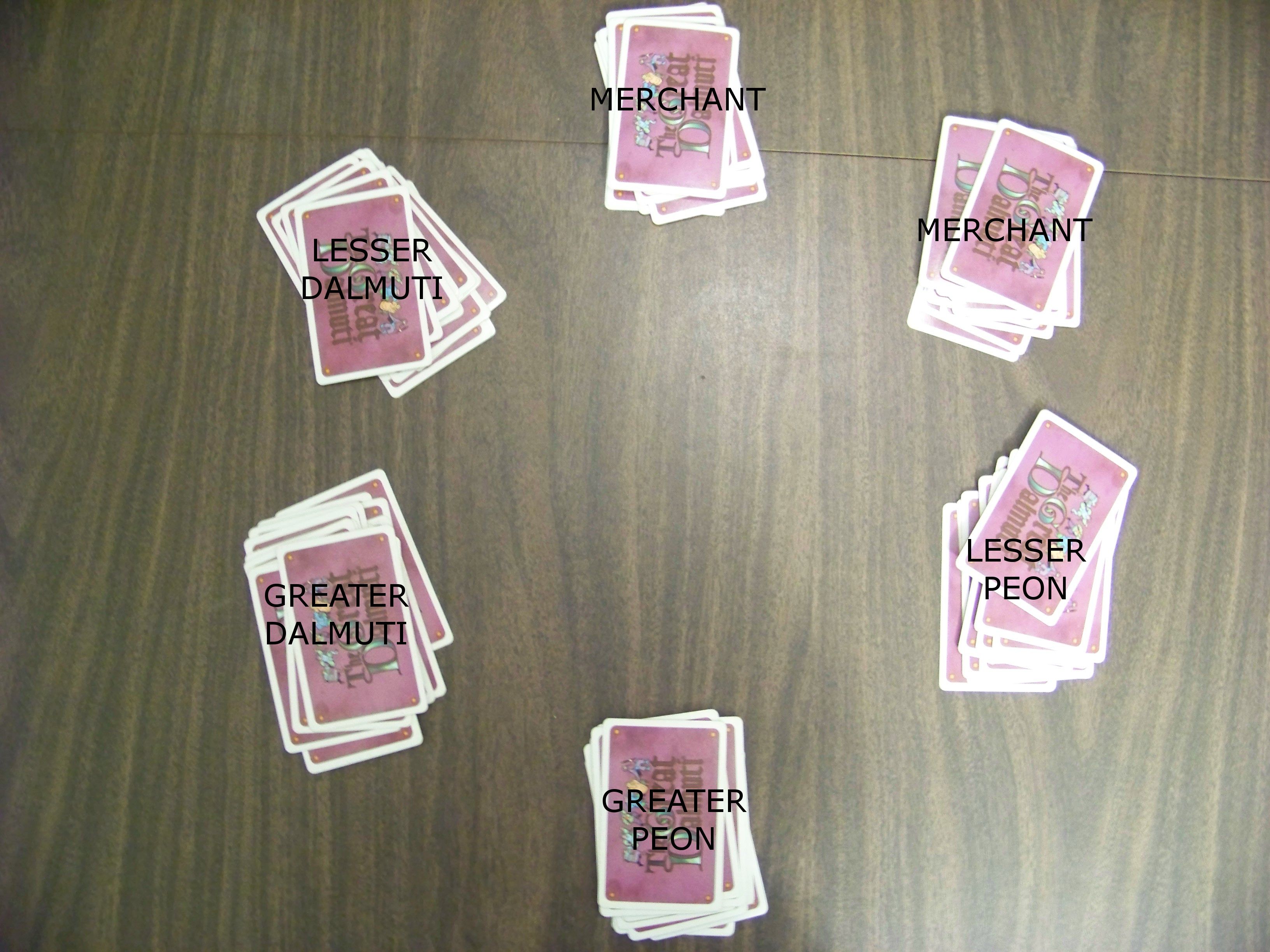
The Greater Peon is responsible for shuffling and dealing the cards (one to each player, clockwise, until the deck is exhausted). Once everyone has their hand of cards, it’s time to pay taxes. The Greater Peon has to give their two lowest cards (lower is better in this game) to the Greater Dalmuti. The Lesser Peon has to give their one lowest card to the Lesser Dalmuti as well. The Greater Dalmuti then chooses any two cards from their hand to give to the Greater Peon, and the Lesser Dalmuti chooses one to give to the Lesser Peon. After taxation is complete, the Greater Dalmuti gets to play first.
Each round begins with a player playing a set of one or more cards of the same rank from their hand (examples: four 12s, two 8s, one 10). The next player can then choose to either top the previous play by playing a set from their hand that is a better rank with the same number of cards (examples: four 11s beats four 12s, two 6s beats two 8s), or pass. This continues until every player passes, at which point the player who played last leads the next hand.
The first player to get rid of all of their cards becomes the Greater Dalmuti for the following round. The next player to go out becomes the Lesser Dalmuti, and so on. Players will likely have to switch seats after each round to rearrange the order.
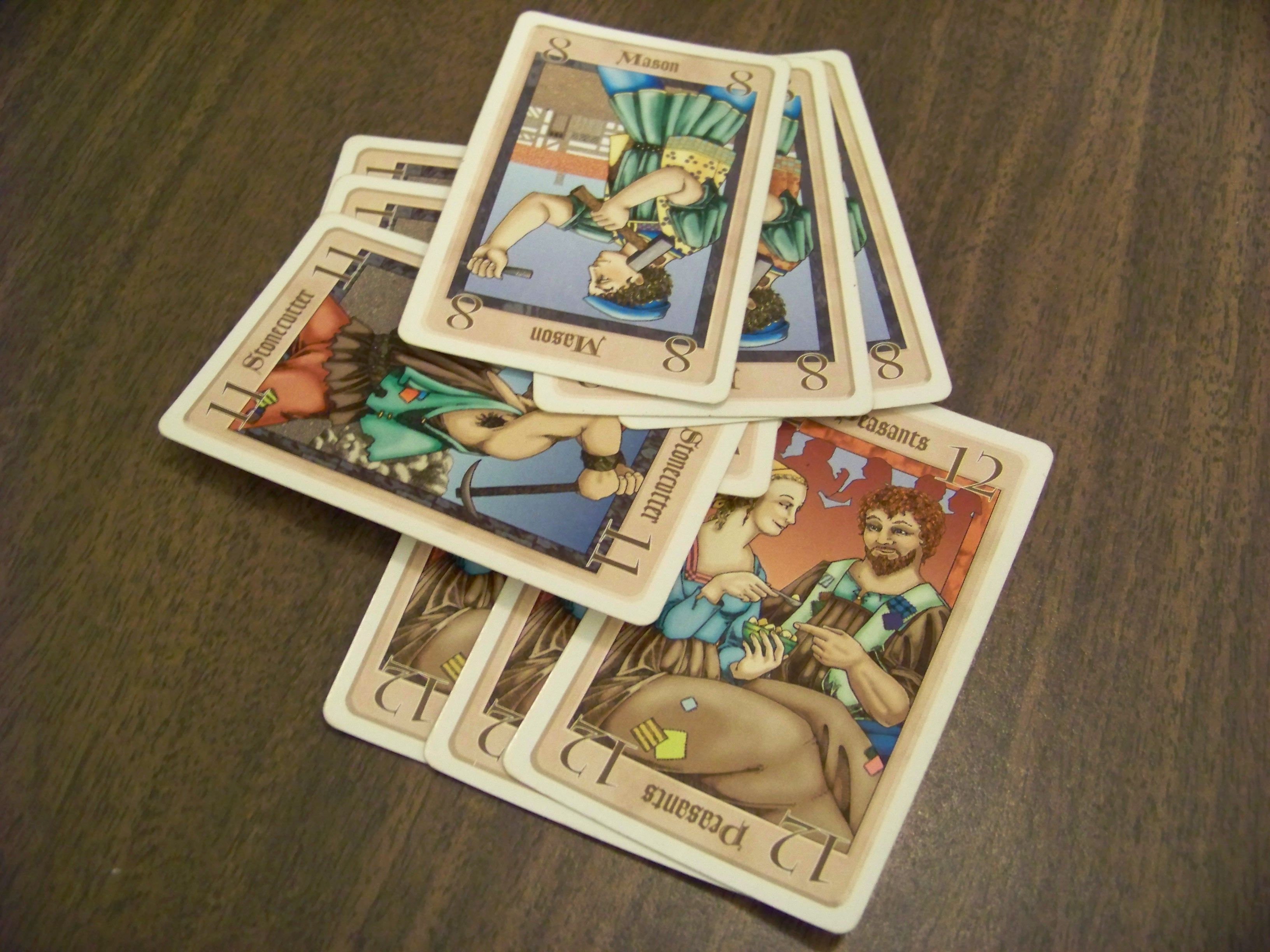
The game continues until...you want it to stop. Each round has a winner and loser in that whoever becomes the Greater Dalmuti wins and whoever becomes the Greater Peon loses, but over multiple rounds there is no end-game trigger or final scores. There are optional scoring rules included where players get points based on how many players they beat each round, and that works well if you want to set a rough time limit on the game before starting.
There are a few additional rules and variants as well, including one of my favorites which is the revolution. If a player is dealt two jesters at the start of a round, they may call a revolution and cancel taxation for the round to benefit the Peons and annoy the Dalmutis. However, if the Greater Peon calls a revolution, the Peons get to switch places with the Dalmutis. It’s rare of course, but it does happen occasionally.
It is difficult to discuss the design of this game, as it is blatantly and intentionally unfair and unbalanced. The lopsided power struggle is the gimmick, and it’s what makes the game unique and memorable.
This means that there is certainly room for roleplaying if the group enjoys that sort of thing. The Dalmutis often act egotistical while the Peons often act bitter and obstinate (they should be, they’re basically savages), and that can be a lot of fun if the people playing are comfortable with playful trash talk.
Other than that aspect though, the game itself is about as simple as it gets for a card game. There is a little bit of strategy in deciding when to use Jesters, deciding whether or not to save a playable set for later, and if you’re really hardcore then counting cards is an option that will sometimes help, but overall there just isn’t that much to think about. On most turns, you aren’t even able to play anything. That being said, since it’s so simple, the game is also very fast-paced, so it’s not like you have to wait forever for your turn to come around again.
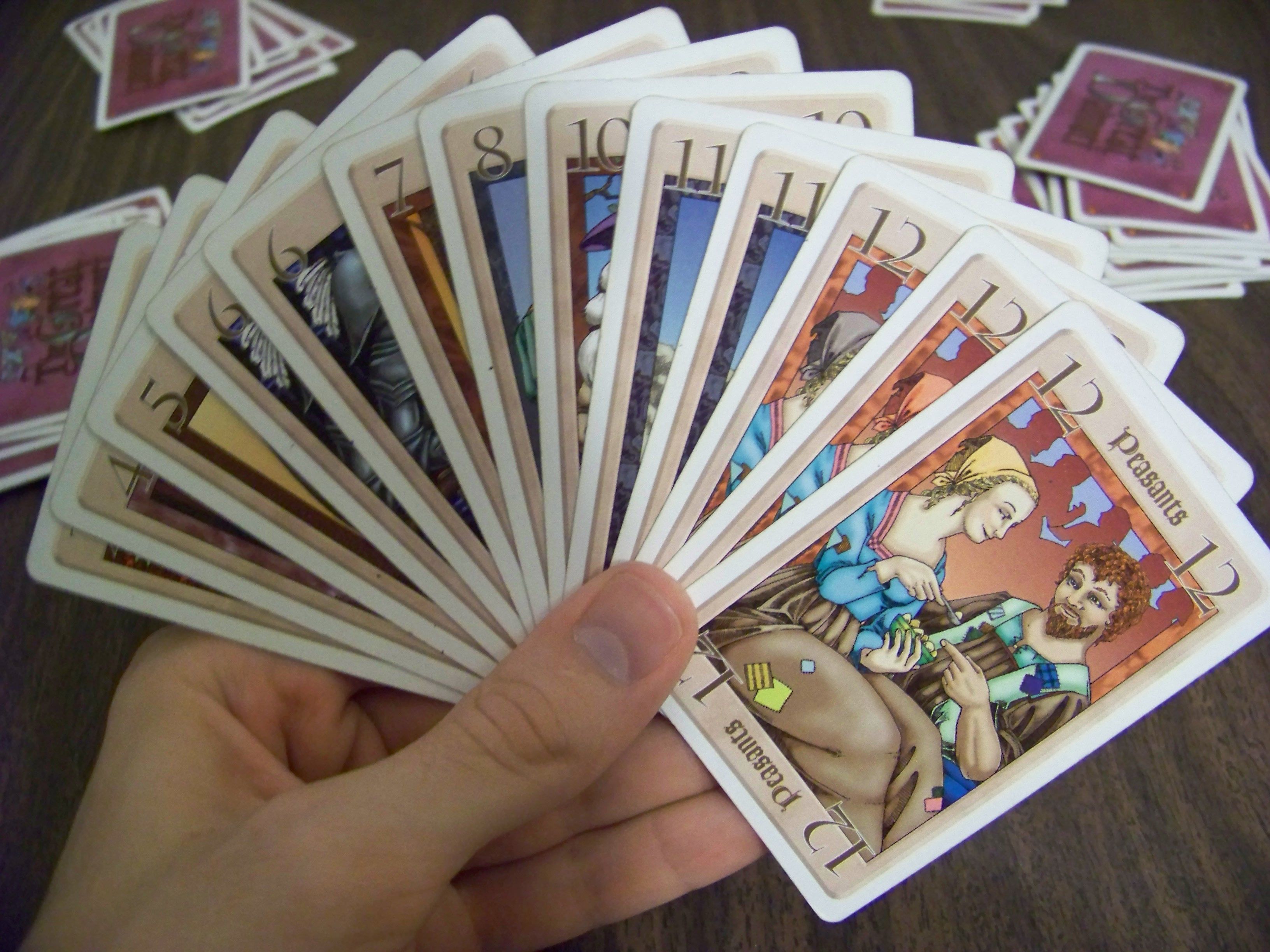
Like any card game, you have to work with what you’re dealt, so luck plays a significant role. Unlike a lot of great card games, however, where there are intricacies to explore and things to learn to improve your skills for next time, it’s depth is quite shallow.
An experienced player won’t have much advantage over a newbie, and that’s exacerbated by the penalties and rewards that come from the hierarchy. That’s not necessarily a bad thing, everyone has a reasonable chance to do well after all, but it’s not the sort of game that fascinates you (Tichu, Poker, and Bridge would be good examples of deep and fascinating card games, and thus those are much more replayable than this is).
The best thing this game has going for it is its flexibility. It works well at all its player counts, it can be as long or as short as you want it to be, anyone can understand it quickly, and players can even come and go hand by hand without disrupting the flow of the game. That makes it very attractive for gatherings where the player count is constantly shifting, such as parties.
There isn’t much to say here. The card quality is...passable I suppose. The art is also fine; I’ve seen better and I’ve seen worse. It doesn’t matter that much when all you focus on are the numbers. The rulebook is also well written.
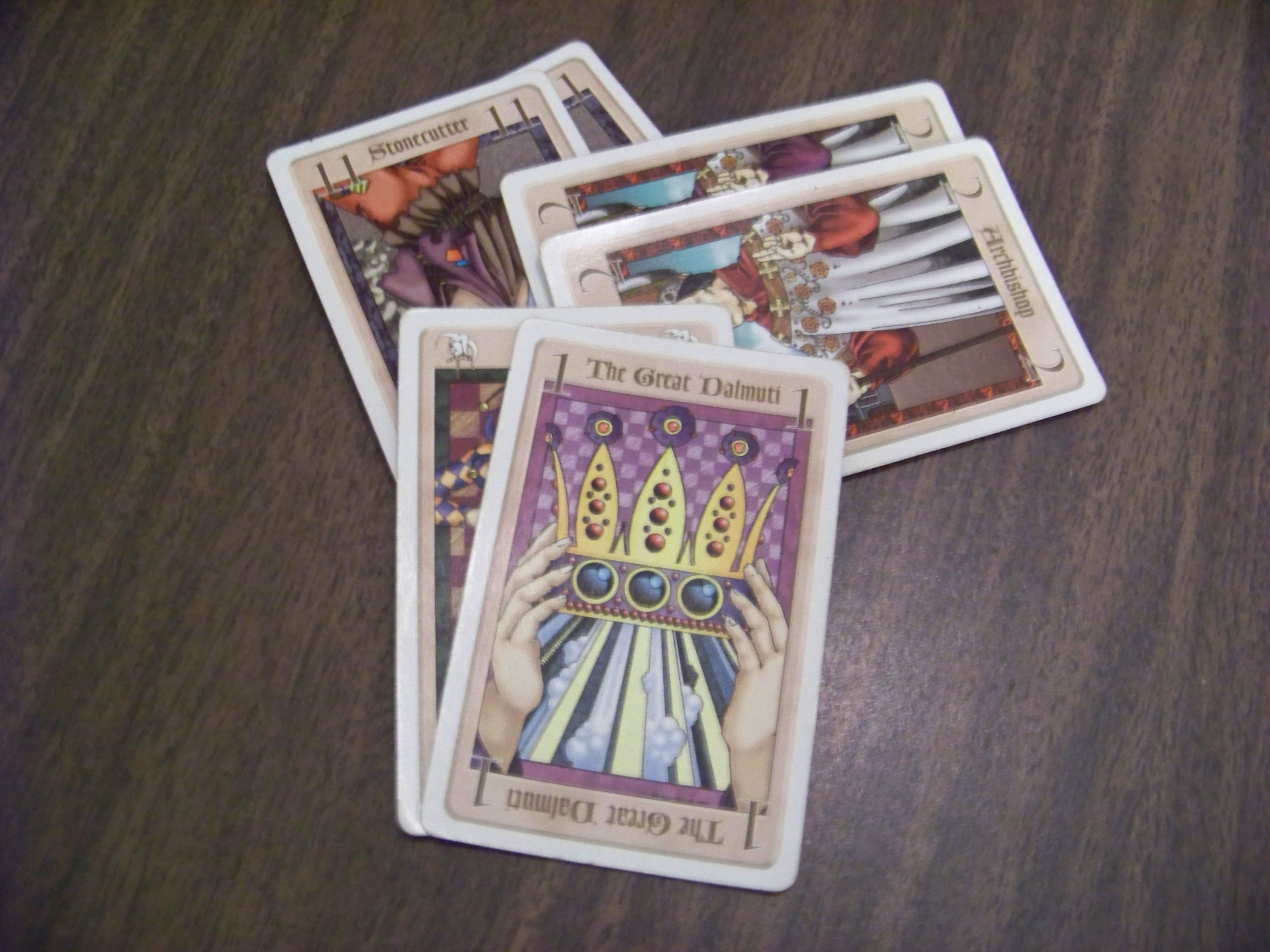
I enjoy the medieval style that they chose, it’s nice to have that extra bit of flavor for a game that could have been nothing more than cards with numbers on them. It also fits in with the hierarchy mechanics well, and adds to the appeal of roleplaying your title. You can even add in special rewards for the Dalmutis and/or punishments for the Peons such as hats or more/less comfortable seats, which is silly fun.
The Great Dalmuti is perfect for those situations where you have a hodgepodge of players looking for something to do. It works really well as an icebreaker, and I could see it being a big hit in a family reunion type setting. The light-hearted role playing is what makes this game stand out, so the more rambunctious the group, the more fun it can be.
However, if you’re looking for a card game you can really sink your teeth into, look elsewhere because this one is not particularly deep or replayable. It is heavily luck-dependent, and if it’s stripped down to just the mechanics, the game can be a bit of a drag. I do enjoy it on occasion, but usually, in times where it’d be appropriate to pull this out, there are several other games I’d rather play instead.





Thanks for reading!